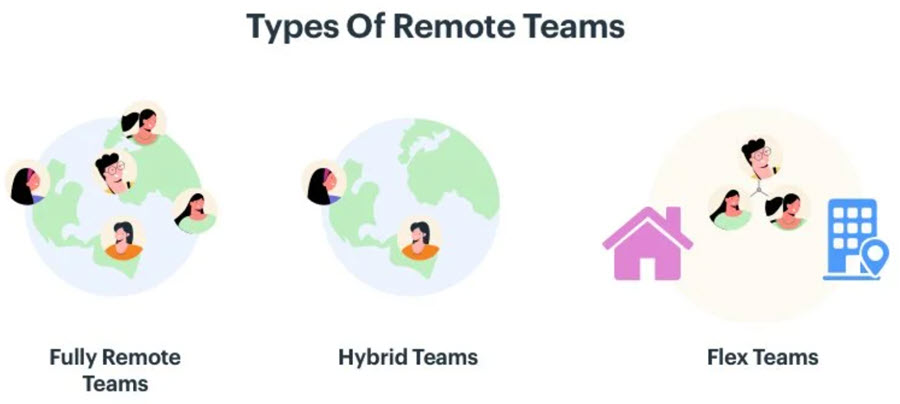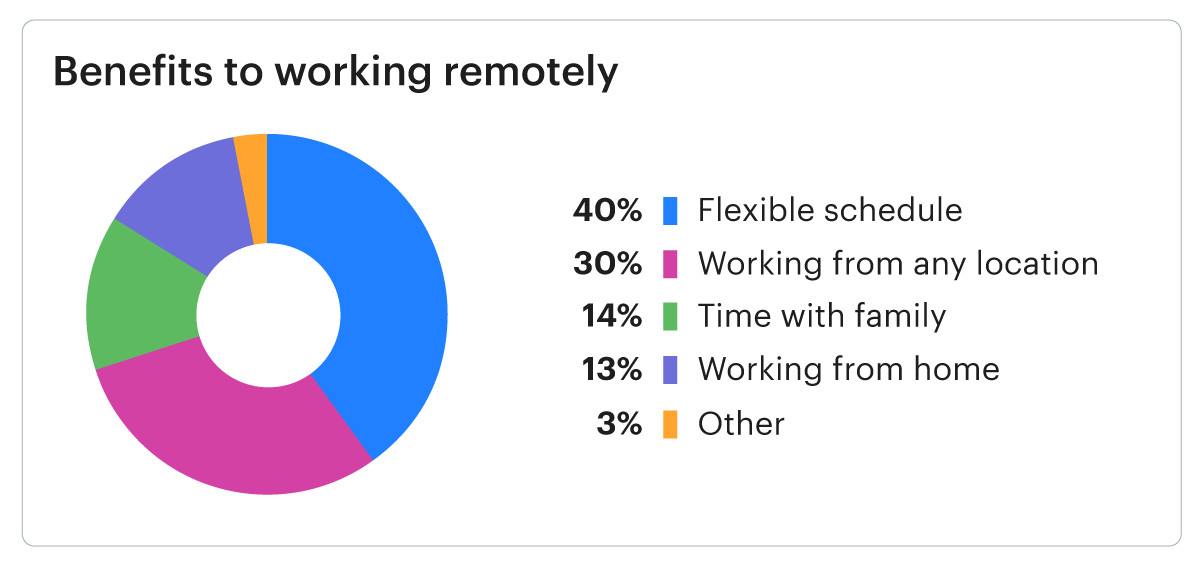Remote work is increasingly becoming the norm rather than an exception. We have the Covid-19 pandemic to thank for speeding up a shift to the remote that was already afoot.
Here are three statistics about remote work to illustrate the scale of the transformation:
- 69 percent of companies already allow remote work.
- 16 percent of companies have gone fully remote.
- Over 99 percent of employees want to work remotely at least once in their careers.
Organizations are increasingly embracing remote work because it allows them to hire talent without any location constraints and lets them save money on company infrastructure.
But implementing a remote work strategy in project management is not as easy as embracing it. Project managers, in particular, have their tasks cut out in ensuring remote work happens glitch-free.
- Managers need to understand how remote work is done.
- They need to study the challenges associated with remote work.
- They need to identify the right project management tool for their team.
- Finally, it’s the managers who need to guide and support team members working remotely.
With this caveat out of the way, it’s time to get into the nuts and bolts of remote project management.
What is a remote project team?
A remote project team is a group of professionals working from different physical locations on a unified project. All the team members work separately from different locations, cities, and time zones. Remote work helps organizations achieve higher employee engagement and satisfaction which in turn allows them to retain top talent successfully.
According to a survey, 87% of remote employees experience less stress and 30 percent believe they are able to accomplish more in less time.
How to manage a remote project team? – 4 Tips
Some of the best practices on how to effectively manage a remote team in a project are:
1. Invest in remote project management tools
You can only have a highly productive remote project team if you have remote project management software to back it up. You need the right remote project management software to ensure that your remote team has a central space to communicate, collaborate, and access all the work-related data.
The remote project management software that you choose should be able to help you in:
- Tracking project milestones and deadlines
- Assigning tasks to different employees
- Streamlining and automating business processes
- Simplifying communication channels among different teams and departments
- Giving employees access to all the information they need to accomplish their daily tasks
Kissflow Project provides all these capabilities and more. It offers the added bonus of being an extremely intuitive project collaboration platform without a steep learning curve. So your team can be up and running in next-to-no-time!
2. Trust your team members and give them space
Since remote employees no longer clock in and out of the office, they need some kind of boundaries to outline their personal and work hours. If you have team members working in different time zones, you can’t expect all of them to be available whenever you want them to be. Instead, discuss everyone’s work schedules in advance and set up deadlines accordingly. It is important to respect the time of your teammates as much as you’d expect them to respect yours.
For managers, it is crucial to avoid micromanaging remote teams in a project. If you keep checking on employees or monitoring their activities, it may alienate or demoralize them. The truth is, most remote employees get more work done when they are working on their own, so it is unlikely for you to see a drop in productivity.
You should trust your team members to manage their time effectively. Whether they start the work a little late or take frequent breaks, it shouldn’t be a problem as long as they are able to get the work done.
3. Provide clear goals and expectations
Managing a remote project team effectively is when everyone clearly understands the team’s goals and what they can do to achieve those goals. Create a document with a neatly organized plan along with individual responsibilities. With remote teams, you are mostly communicating through emails and instant messaging applications. If you don’t word your instructions correctly, then you may end up confusing or even offending the team members.
That is why, when communicating online with your team, make sure you are as specific as possible about the project objectives, goals, and expectations. For instance, instead of saying a vague statement like ‘I need this ASAP,’ say ‘I need this work finished by 3 pm PST.’
4. Offer clear and direct feedback
Managers need to be comfortable in offering both positive and negative feedback to remote employees. Get as specific about your feedback as possible so that the employees can understand your expectations and perform better in the future. If an employee’s performance isn’t up to the mark, then provide them with constructive feedback instead of just criticism. Let them know what they did wrong and how they can rectify the problem.
At the same time, when an employee performs well, make sure to recognize their efforts. You can also have a recognition program for your employees where they are rewarded for meeting certain milestones which will help motivate them.
Types of remote teams in a project
Not being co-located is not the only distinctive characteristic of a remote project team. There are several types used for different purposes and market natures:

Fully remote teams: The name pretty much explains the term clearly; everyone involved in the project works from their homes or a separate office.
Hybrid teams: Some team members work from a centralized location while others work remotely.
Flex teams: Team members have the flexibility to work both remotely as well from a co-located space.
Advantages of working as a remote project team
Remote work helps organizations achieve higher employee engagement and satisfaction which in turn allows them to retain top talent successfully.

1. Increased productivity
The office is a space for distractions of all kinds. According to a survey, 44 percent of the respondents say they were less distracted and were able to get more done than when they were in the office. Having the flexibility to work whenever they want, makes them adapt to their natural energy cycles and thus eventually have an increase in productivity.
2. Reduced turnover
The number of companies that offer remote work as a desirable perk is exploding in the last few years. A shocking 95 percent of employers believe that offering remote work played a major role in retaining their employees.
3. Reduced stress
According to a survey, 87 percent of remote employees experience less stress. Remote work makes it easier for employees to have a life outside of work. They have more time to spend with family, friends, and pets, which works wonders in bringing their stress levels down and reducing burnout.
4. Access to top talent
Hiring only in one geographic location drastically limits the extent of your talent pool. Being remote opens your options to the whole world, letting the brightest people join your team without the commuting radius affecting their decision. With more Gen Z people entering the workforce, a whopping 70 percent say the ability to work remotely is an important factor in accepting a job offer.
5. Increased savings
Office space isn’t cheap. The cost of running remote teams is nothing in comparison. The only overhead costs are the SaaS tools you’ll be investing in. Project management tools like Kissflow Project, tools for video conferencing like Zoom, and Google project management is pretty much all you need to get your team running.
Source: kissflow






